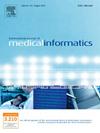Large language models vs human for classifying clinical documents
IF 3.7
2区 医学
Q2 COMPUTER SCIENCE, INFORMATION SYSTEMS
International Journal of Medical Informatics
Pub Date : 2025-01-21
DOI:10.1016/j.ijmedinf.2025.105800
引用次数: 0
Abstract
Background
Accurate classification of medical records is crucial for clinical documentation, particularly when using the 10th revision of the International Classification of Diseases (ICD-10) coding system. The use of machine learning algorithms and Systematized Nomenclature of Medicine (SNOMED) mapping has shown promise in performing these classifications. However, challenges remain, particularly in reducing false negatives, where certain diagnoses are not correctly identified by either approach.
Objective
This study explores the potential of leveraging advanced large language models to improve the accuracy of ICD-10 classifications in challenging cases of medical records where machine learning and SNOMED mapping fail.
Methods
We evaluated the performance of ChatGPT 3.5 and ChatGPT 4 in classifying ICD-10 codes from discharge summaries within selected records of the Medical Information Mart for Intensive Care (MIMIC) IV dataset. These records comprised 802 discharge summaries identified as false negatives by both machine learning and SNOMED mapping methods, showing their challenging case. Each summary was assessed by ChatGPT 3.5 and 4 using a classification prompt, and the results were compared to human coder evaluations. Five human coders, with a combined experience of over 30 years, independently classified a stratified sample of 100 summaries to validate ChatGPT's performance.
Results
ChatGPT 4 demonstrated significantly improved consistency over ChatGPT 3.5, with matching results between runs ranging from 86% to 89%, compared to 57% to 67% for ChatGPT 3.5. The classification accuracy of ChatGPT 4 was variable across different ICD-10 codes. Overall, human coders performed better than ChatGPT. However, ChatGPT matched the median performance of human coders, achieving an accuracy rate of 22%.
Conclusion
This study underscores the potential of integrating advanced language models with clinical coding processes to improve documentation accuracy. ChatGPT 4 demonstrated improved consistency and comparable performance to median human coders, achieving 22% accuracy in challenging cases. Combining ChatGPT with methods like SNOMED mapping could further enhance clinical coding accuracy, particularly for complex scenarios.
求助全文
约1分钟内获得全文
求助全文
来源期刊

International Journal of Medical Informatics
医学-计算机:信息系统
CiteScore
8.90
自引率
4.10%
发文量
217
审稿时长
42 days
期刊介绍:
International Journal of Medical Informatics provides an international medium for dissemination of original results and interpretative reviews concerning the field of medical informatics. The Journal emphasizes the evaluation of systems in healthcare settings.
The scope of journal covers:
Information systems, including national or international registration systems, hospital information systems, departmental and/or physician''s office systems, document handling systems, electronic medical record systems, standardization, systems integration etc.;
Computer-aided medical decision support systems using heuristic, algorithmic and/or statistical methods as exemplified in decision theory, protocol development, artificial intelligence, etc.
Educational computer based programs pertaining to medical informatics or medicine in general;
Organizational, economic, social, clinical impact, ethical and cost-benefit aspects of IT applications in health care.
 求助内容:
求助内容: 应助结果提醒方式:
应助结果提醒方式:


